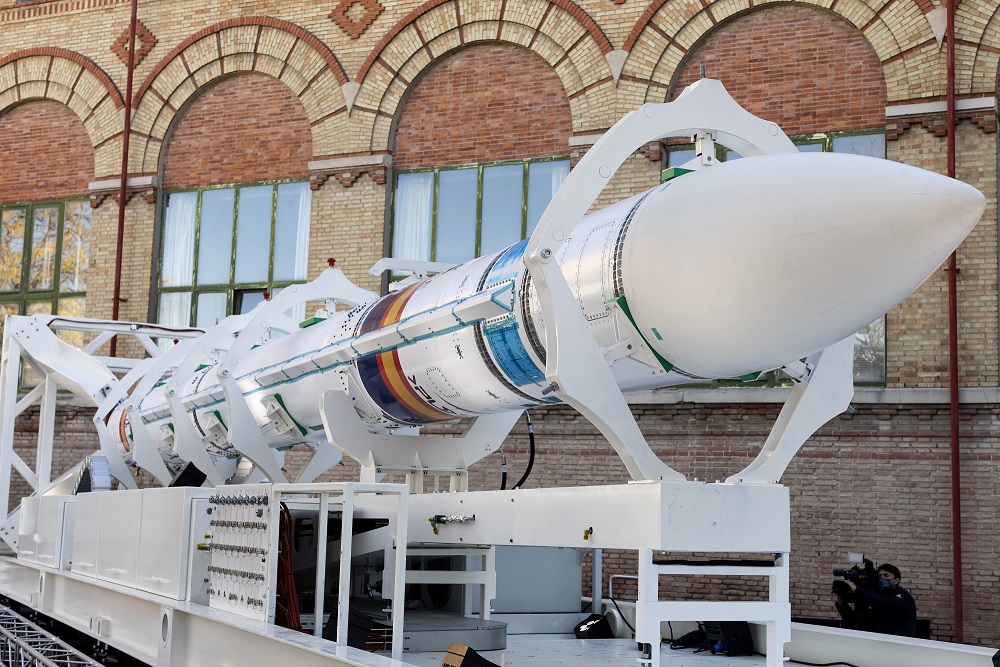HELSINKI — Spanish launch startup PLD Space has debuted a fully assembled Miura 1 reusable suborbital rocket as a step towards its inaugural flight in 2022.
The Miura 1 was unveiled at the National Museum of Natural Science in Madrid Nov. 16. Next, it will be returned to the PLD Space base at Teruel Airport for combined qualification testing including a full mission duration hot fire test.
After testing the stage will be shipped to the launch base to perform a combined test with all the ground segment and ground infrastructure, before launch.
Raúl Verdú, COO and Cofounder of PLD Space, told SpaceNews during an interview at the Space Tech Expo Europe last week that the firm is targeting the second half of 2022 for launch of Miura 1.
The rocket is designed to reach a maximum altitude of 150 kilometers while carrying a payload of up to 100 kilograms.
While the Miura 1 rocket is suborbital, PLD Space is in an unofficial European commercial race to space with German launch startups Isar Aerospace and Rocket Factory Augsburg, both of which are currently targeting first orbital launches in the second half of 2022. Other players such as UK-based Skyrora are also working towards orbital launches.
“There are some very promising players in Europe. And in our opinion, we have a strong position in Spain because of a lot of things such as the maturity level of the development, the investors we have, national support [and] European support,” says Verdú.
“It’s very interesting days, a very exciting moment [in which] we see a future with two three European small launcher operators.”
The launch of the suborbital Miura 1 is a stepping stone to the Miura 5 orbital rocket. The Miura 5 engine will inherit the thrust chamber, injectors and other components from the Miura 1 pressure-fed engine. The main challenge for the Miura 5 engine is to develop the turbopump, says Verdú.
Subsystem tests for the Miura 5, designed to carry 300 kilograms to low Earth orbit, will begin next year. The target is a first launch in July 2024 from French Guiana.
“It is very important to succeed and not to go faster than we can, because you need to mature that technology,” says Verdú. PLD Space was founded in 2011 and began development on the first design of the Miura 1 engine in 2014, with a big focus on testing. Other competitors in Europe established more recently have been looking to move faster, drawing on examples from elsewhere.
Miura 1 had earlier been slated for a first flight in 2019, but experienced a “series of test firing anomalies.” The COVID outbreak also impacted progress.
The first pair of Miura 5 launches will be “block 1.0” fully expendable versions. A reusable version will be introduced for subsequent flights. This stage will implement lessons learnt from ESA´s Future Launchers Preparatory Programme (FLPP) contracts, called Liquid Propulsion Stage Recovery (LPSR) 1 and LPSR2.
“The entire engine is developed and owned by PLD. So this is a huge competitive advantage, because we have independence from third parties to provide the proper launch service.”
PLD Space is based in Elche, Spain, with technical facilities in Teruel, Huelva and French Guiana. It has so far attracted €36 million in investment and, Verdú says, being based in Spain helps keep costs low.
